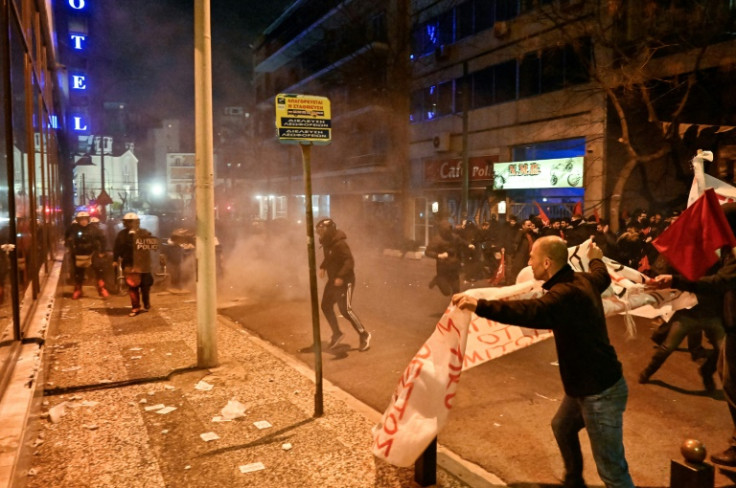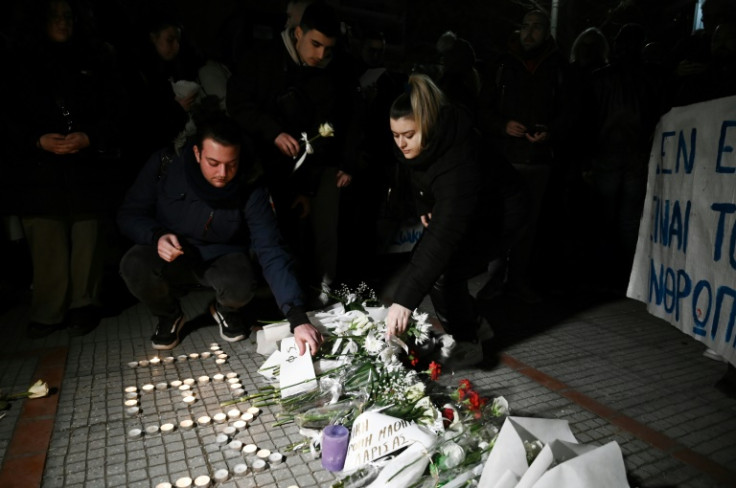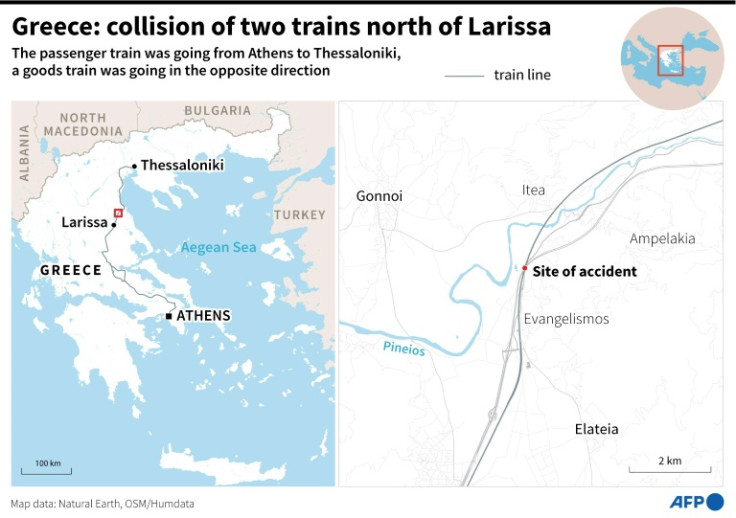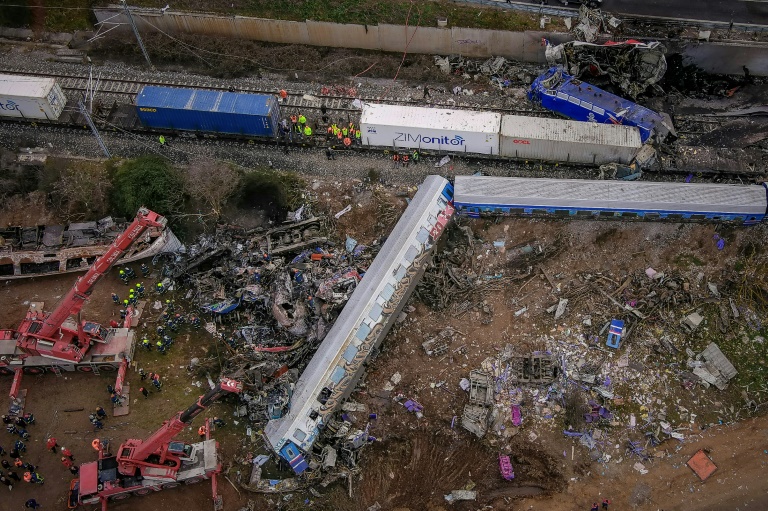AFP
The toll from Greece’s worst rail accident rose to 42 on Thursday after a head-on collision blamed on “human error” that has sparked angry protests.
The two trains collided near a tunnel outside the central Greek city of Larissa before midnight on Tuesday. Two carriages were crushed and a third caught fire, trapping people inside.
A fire department spokeswoman told AFP that rescue crews had worked all night in search for survivors, but chances were dwindling.
“Time is not on our side,” she said.
Prime Minister Kyriakos Mitsotakis said it was a “terrible train accident without precedent” in Greece, promising that the tragedy would be “fully” investigated.
“Everything shows that the drama was, sadly, mainly due to a tragic human error,” Mitsotakis said Wednesday after visiting the disaster site.
Passengers have described scenes of horror and chaos from the crash, many dodging smashed glass and debris as the train keeled over, and breaking windows to climb out.
The train’s restaurant car erupted in flames after the collision, with temperatures inside reaching 1,300 degrees Celsius, the fire department said.
For hours after the crash it was not immediately clear how many people were on board, complicating efforts to determine how many are missing.
Roubini Leontari, the chief coroner at Larissa’s general hospital, on Thursday told state TV ERT that over 10 people are missing, including two Cyprus nationals.
TV footage from the wreck site on Thursday showed a crane gingerly lifting the mangled remains of a train carriage, under which a body is believed to be trapped.
“It was a student train, full of kids…in their 20s,” Costas Bargiotas, a senior orthopaedic doctor at Larissa General Hospital, told Skai TV.
“It was truly shocking… the carriages crumpled like paper,” he said.
Rescuers at the scene said they had never dealt with a disaster of this magnitude before.
Many bodies were charred beyond recognition and some passengers were being identified from body parts.
Seventeen biological samples have been collected from remains, and from 23 relatives seeking a match, the police said.
Angry demonstrators rallied outside the Athens office of Hellenic Train on Wednesday evening, as police used tear gas to disperse protesters who threw rocks at the building.
Earlier in Larissa, demonstrators held a silent vigil and brought white roses to form the word Tempe, the name of the valley where the accident took place.
The station master on duty at the time of the accident was due to appear before a prosecutor at the central city of Larissa later Thursday.
The 59-year-old will have to explain how a passenger train carrying some 350 people was allowed to run on the same line as a freight train for several kilometres.
He will be charged with negligent homicide and faces a life sentence if convicted.
Train unionists have said the safety shortcomings of the Athens-Thessaloniki railway line had been known for years.
Five years after Greek rail operator Trainose was sold to Ferrovie Dello Stato Italiane and became Hellenic Train, safety systems on the Athens-Thessaloniki line are still not fully automated.
Nikos Savva, a medical student from Cyprus, told AFP that the disaster was only a matter of time.
“The rail network looked problematic, with worn down, badly paid staff,” he said.
Authorities have declared three days of national mourning.
Hospitals in three cities — Larissa, Thessaloniki and Katerini — were treating the dozens of wounded, six of whom are in intensive care.
Greece’s transport minister submitted his resignation just hours after the accident.
The stakes are personally high for Mitsotakis, who seeks re-election this year and was expected to announce an April ballot.

AFP

AFP

AFP






